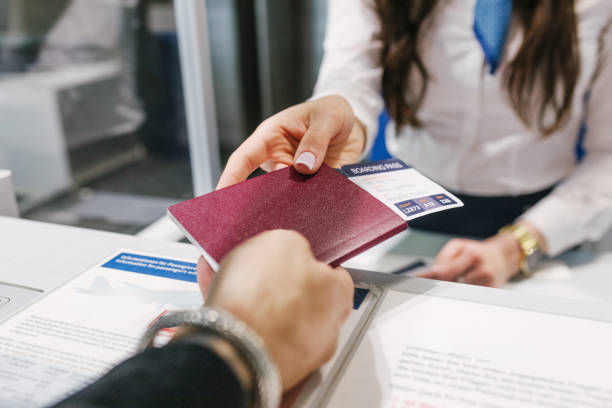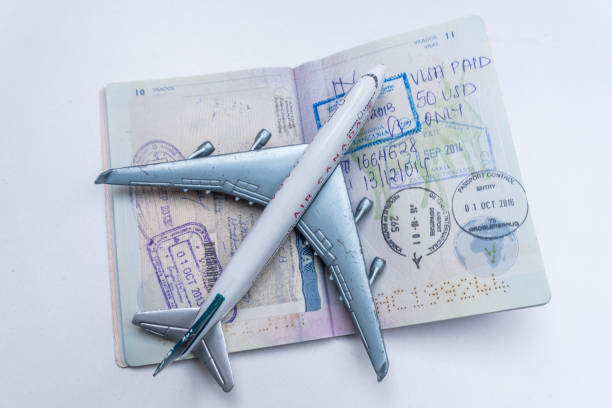Immigration
K1 visa: How to Apply for a US Fiance Visa
A K1 visa is a US immigrant visa that allows a fiancé or fiancée to marry a US citizen within 90 days of arriving in the United States.
It is the first visa required for a foreign citizen married to a US citizen to alter their status to Legal Permanent Resident (LPR).
K1 Visa Eligibility Criteria:
To obtain a K1 visa, you must meet the following criteria:
- Become engaged to a US citizen.
- Have the intention to marry within 90 days of entering the United States.
- Have proof of your relationship before getting engaged.
- Get married in accordance with US rules while on a K1 visa.
- You and the US citizen must have met in person at least once within the last two years.
- Exceptions to this condition will be made if you can demonstrate that the US citizen endured great hardship in order to come and visit the foreign citizen’s fiancé. Extreme hardship can be demonstrated using cultural, customary, or other criteria.
- Any prior marriages that one of you has had are officially ended.
What Documents are Required for a K1 Visa Application?
The following are the documents you should present when applying for a K1 visa:
- Valid passport for at least six months following your intended stay in the United States.
- Two recent US visa images, as per the Photo Requirements.
- Form DS-160 confirmation page and code.
- Interview schedule letter.
- Approved Form I-129F.
- Cover letter explaining the purpose of your visit to the US.
- Criminal background documents.
- Certificates of divorce or death from a prior marriage.
- Evidence of the relationship with a US citizen.
- Medical examination documents (optional vaccination documents).
- Proof of fees paid.
- Proof of Health Insurance Coverage
How Do I Apply for the K1 Visa?
The fiancé visa application includes a few steps that both fiances must complete. It must be initiated by a US citizen.
The US citizen must seek approval from US Citizenship and Immigration Services (USCIS) to bring and sponsor their foreign citizen fiancé to the United States.
If USCIS provides this permission, the foreign citizen fiancé must file for a K1 visa.
File a Petition for Alien Fiance.
To get a petition authorized by USCIS, you must take the following steps:
File Form I-129F. The US citizen must first obtain authorization from USCIS for the foreign citizen’s fiancé to visit the US.
This approval is sought by completing Form I-129F, Petition for Alien Fiance, with USCIS. The petition must be filed within the United States and cannot be filed from overseas.
Send the petition to USCIS. When the petition arrives at USCIS, officials will assess the proof of the connection, whether the parties want to marry, and whether they meet the eligibility requirements.
If the US citizen and the foreign citizen fiancé meet the conditions, USCIS will approve the petition and forward it to the National Visa Center (NVC).
Wait for an answer from the NVC. The NVC will then notify the couple and send the documents to the US Embassy or Consulate, where the foreign citizen will apply for a K1 visa.
The approved petition is identifiable by the NVC case number. A foreign citizen cannot apply for a K1 visa unless Form I-129F is approved.
K1 Visa Application Procedure
After Form I-129F has been approved, you can begin the K1 visa application process. This must be done by the foreign citizen at a US Embassy or Consulate in their country of residence, by following these steps:
- Complete Form DS-160.
- Schedule the US Fiance visa interview.
- Complete medical examinations.
- Compile your document file.
- Attend a visa interview.
- Complete Form DS-160
Form DS-160, Online Nonimmigrant Visa Application, is used for US nonimmigrant visas, including the K1 visa.
The form will ask for your personal information as well as the reasons you plan to visit the United States. When you submit it, you will receive a confirmation page and a code.
Schedule the US Fiance Visa Interview.
Your visa interview will take place if you are between the ages of 14 and 79. To complete the interview, first schedule it.
You must plan it as soon as possible because you may have to wait too long if the Embassy or Consulate where you are applying has a heavy workload.
When you book your interview, you will receive an interview scheduling letter.
Complete medical exams.
No matter your age, if you are traveling to the United States and want to file for a US immigrant visa in the future, you must have a licensed physician perform the requisite physical examination.
The doctor must prepare a report indicating any health issues. Because the fiancé will shortly marry and petition for permanent residence in the United States, it is also recommended that he obtain the appropriate vaccinations to fulfill that need.
FAQS
Why Do K1 Visa Applications Get Rejected?
- Prior involvement in criminal activity (for example, drug trafficking).
- You provided falsified documentation.
- You overstayed in the United States on a previous visa or violated other visa requirements.
- If you do not meet these requirements, you may be informed that you are disqualified for the K1 visa.
How Much Does It Cost to Apply for a K-1 Visa?
Applying for a K1 visa costs $265. However, the sums fluctuate by year and country due to the United States’ relationships with other countries.
What is the Visa K1 processing time?
The K1 visa processing duration might range from weeks to months. It does not have a specific processing time.
It will most certainly take a few months, so anticipate any delays if you are planning a wedding in the United States.
Conclusion
The K-1 Fiancee Visa is a temporary non-immigrant visa that serves a specific purpose. It allows a foreign national fiancée of a US citizen to enter the United States and marry the US citizen.
The wedding must take place within 90 days of the foreign citizen’s admission into the United States.
After that, the foreign citizen spouse may apply for legal permanent residence through the Adjustment of Status process rather than going home.







